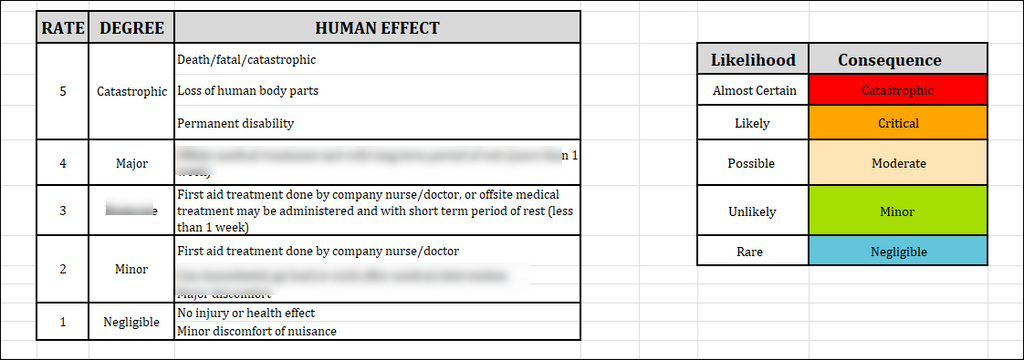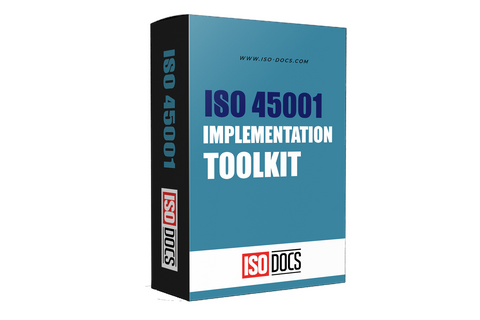ISO 45001 Hazard Identification, Risk Assessment, and Control Plan Template
Introduction
Hazard identification, risk assessment, and control plans are crucial components of a successful health and safety management system, especially when aiming to meet the requirements of ISO 45001. This template provides a structured approach to identifying hazards, assessing risks, and implementing controls to mitigate risks in the workplace. By utilizing this template, organizations can effectively manage occupational health and safety risks, improve their safety performance, and ensure compliance with regulatory requirements.

Understanding Hazard Identification, Risk Assessment, And Control Plan For ISO 45001
Hazard Identification, Risk Assessment, and Control Plans are key components of an effective occupational health and safety management system, as outlined in ISO 45001. These processes identify potential hazards in the workplace, assess the risks associated with these hazards, and develop control measures to eliminate or minimize these risks.
1. Hazard Identification: The first step is to identify all potential hazards in the workplace. This can include physical hazards such as machinery or chemicals, biological hazards like viruses or bacteria, and psychosocial hazards such as stress or harassment. It is important to involve employees in the hazard identification process, as they are often the most familiar with the day-to-day operations of the workplace.
2. Risk Assessment: Once hazards have been identified, the next step is to assess the risks associated with each hazard. This involves evaluating the likelihood of an incident occurring and the potential consequences of such an incident. Risk assessment can be qualitative or quantitative, depending on the complexity of the hazard.
3. Control Plan: Based on the risk assessment results, a control plan should be developed to eliminate or reduce the identified risks. This can include implementing engineering controls such as guarding or ventilation systems, administrative controls such as training or written procedures, or personal protective equipment (PPE). The control plan should also include monitoring and review mechanisms to ensure that control measures are effective and continue to be implemented.
By following the Hazard Identification, Risk Assessment, and Control Plan process outlined in ISO 45001, organizations can proactively manage occupational health and safety risks in the workplace, protect the health and well-being of employees, and comply with legal and regulatory requirements.
Compliance With ISO 45001 Standards In Hazard Identification, Risk Assessment, And Control
ISO 45001 is an international standard for occupational health and safety management systems, which aims to help organizations improve their workplace safety and reduce the risk of accidents and injuries. Compliance with ISO 45001 standards in hazard identification, risk assessment, and control is essential for organizations to create a safe and healthy work environment for their employees.
- Hazard identification is identifying potential workplace harm sources, such as machinery, chemicals, or hazardous substances. This can be done through regular workplace inspections, staff training, and employee consultation on potential risks.
- Risk assessment involves evaluating the likelihood and severity of potential hazards and taking steps to eliminate or control them. This can include implementing safety measures, providing personal protective equipment, or developing emergency response plans.
- Control measures are actions taken to reduce or eliminate risks in the workplace. This can include engineering controls, such as machine guarding or ventilation systems; administrative controls, such as safety policies and procedures; or personal protective equipment, such as gloves, helmets, or goggles.
By ensuring compliance with ISO 45001 standards in hazard identification, risk assessment, and control, organizations can protect employees from workplace hazards, reduce the risk of accidents and injuries, and demonstrate their commitment to workplace safety. This can ultimately lead to greater employee satisfaction, improved productivity, and a positive reputation in the industry.

Benefits Of Using Hazard Identification, Risk Assessment, And Control
1. Increased Safety: Hazard identification, risk assessment, and control help identify potential hazards in the workplace or other environments, allowing for measures to be implemented to reduce or eliminate these risks. This ultimately leads to a safer environment for individuals.
2. Compliance With Regulations: Many industries are required by law to conduct hazard identification, risk assessment, and control activities to ensure the safety of their employees and the public. Implementing these processes helps organizations comply with regulations and avoid potential legal repercussions.
3. Improved Decision-making: By systematically identifying hazards and assessing risks, organizations are better equipped to make informed decisions about controlling these risks. This can lead to more effective risk mitigation strategies and overall safer outcomes.
4. Cost Savings: Implementing hazard identification, risk assessment, and control measures can help prevent accidents, injuries, and property damage. This can result in cost savings for organizations in terms of reduced medical expenses, insurance premiums, and lost productivity.
5. Enhanced Reputation: Organizations that prioritize safety through hazard identification, risk assessment, and control demonstrate a commitment to the well-being of their employees and stakeholders. This can enhance their reputation within their industry and with the public.
6. Continuous Improvement: Hazard identification, risk assessment, and control processes are not one-time activities but an ongoing cycle of identifying, assessing, and addressing risks. This continuous improvement approach can help organizations proactively address emerging risks and avoid potential safety issues.
Conclusion
In conclusion, utilizing a Hazard Identification, Risk Assessment, and Control Plan for ISO 45001 is essential for maintaining a safe work environment and complying with occupational health and safety standards. This template provides a systematic approach to identifying hazards, assessing risks, and implementing controls to mitigate them. By using this template, organizations can proactively manage workplace risks and ensure the well-being of their employees. Hazard Identification, Risk Assessment, and Control Plan for ISO 45001 Template today to ensure a safe and compliant work environment.


